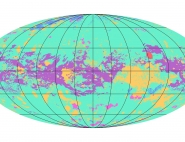CNES projects library
C
I
M
P
S
U
Cassini-Huygens
The planet Saturn has long been cloaked in mystery. To unveil Saturn’s secrets and those of its moons, the Cassini spacecraft departed Earth on 15 October 1997, carrying the Huygens lander to be released in the dense atmosphere of Titan, its largest moon. In 2004, Cassini-Huygens arrived in the vicinity of the ringed planet and went into orbit. Cassini then began its mission to study the atmosphere, magnetosphere and rings of Saturn, as well as its moons (among them Titan, Enceladus and Rhea). A few months after going into orbit, Cassini released the Huygens lander, which studied the atmosphere of Titan for several hours before reaching its surface. Huygens’ descent and landing on Titan returned valuable data for scientists on the moon’s atmosphere and soil.
Developed by NASA, the Cassini orbiter has 12 instruments. The Huygens probe supplied by ESA as part of the Horizon 2000 programme has six. While France’s contribution to developing and operating these instruments is significant (CNES is helping to perform half of the experiments on the orbiter and lander), it chiefly concerns two instruments on Huygens in particular: ACP (Aerosol Collector and Pyrolyser), designed to analyse the chemical composition of aerosols and developed by the LATMOS atmospheres, environments and space observations laboratory in Paris-Guyancourt; and HASI (Huygens Atmosphere Structure Instrument), a suite of sensors designed to measure the properties of Titan’s atmosphere, whose principal investigator, Marcello Fulchignoni, is from the LESIA space and astrophysics instrumentation research laboratory in Meudon. Thales Alenia Space in Cannes built the Huygens probe as prime contractor for ESA.
Mission's news feed
-

Huygens landing spin mystery solved
Fifteen years ago, ESA’s Huygens probe made history when it descended to the surface of Saturn’s moon Titan and became the first probe to successfully land on another world in the...
February 3, 2020
-

First complete cartography of Titan moon by Cassini
The first complete geological map of the largest Saturn moon has been realized with 120 flybys of Cassini between 2004 and 2017.
December 4, 2019
-

Source of Saturn’s kilometric radiation revealed
Using data from the Cassini mission, scientists are unravelling the mechanisms that drive auroral radio emissions at Saturn’s poles, which are key to understanding certain...
November 13, 2018


